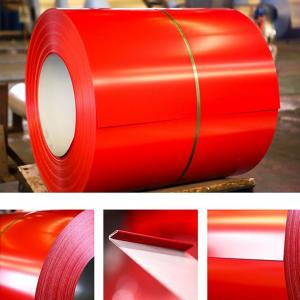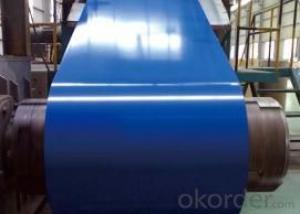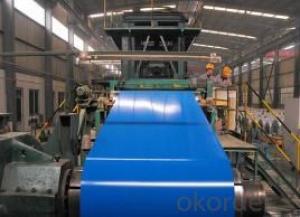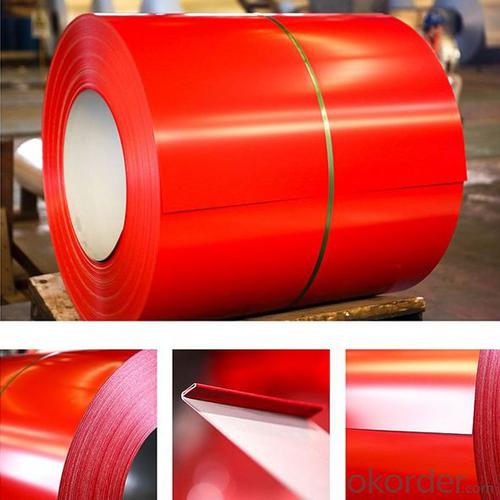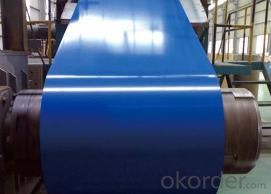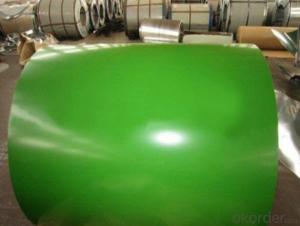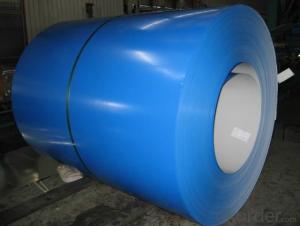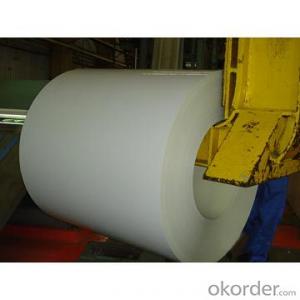Color Coated Alu-zinc Steel Coil PPGP PRE-PAINTED Aluzinc
- Loading Port:
- Shanghai
- Payment Terms:
- TT or LC
- Min Order Qty:
- 20 m.t.
- Supply Capability:
- 10000 m.t./month
OKorder Service Pledge
Quality Product, Order Online Tracking, Timely Delivery
OKorder Financial Service
Credit Rating, Credit Services, Credit Purchasing
You Might Also Like
With Aluzinc as base metal, after pretreatment (degrease and chemical treatment) and liquid dope with several layers od color, then after firing and cooling, finally the plate steel is called pre-painted aluzinc steel.
Pre-painted aluzinc steel is good capable of decoration, molding, corrosion resistance.
It generally displays superior workability, durability and weather resistance
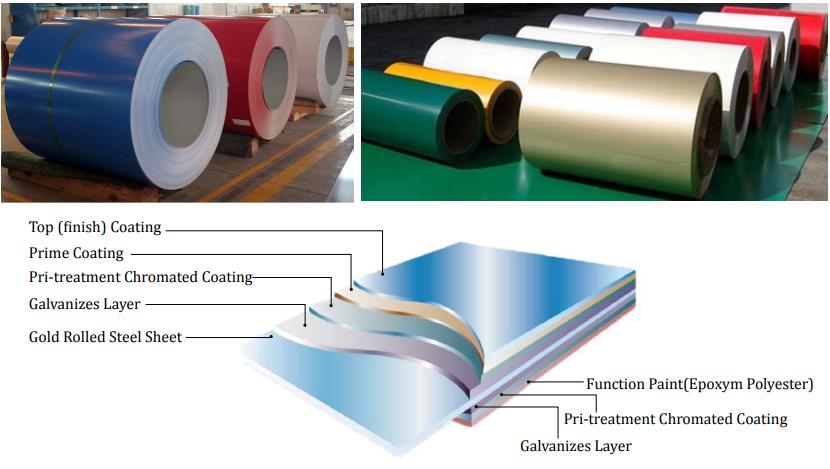
AVAILABLE SPECIFICATION
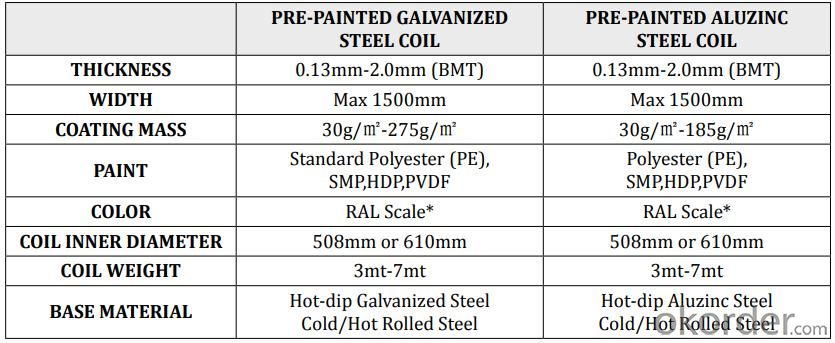
STANDARD & GRADE
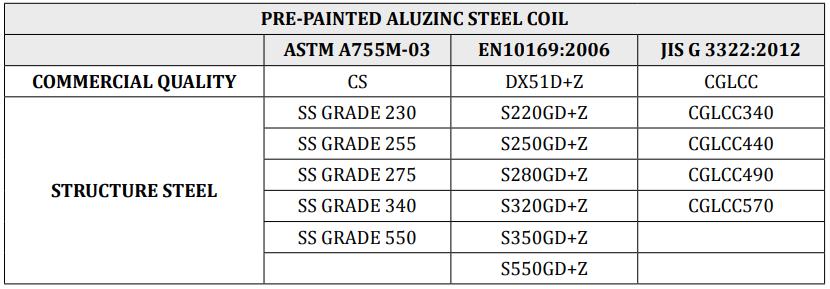
PAINT PROPERTY

APPLICATION
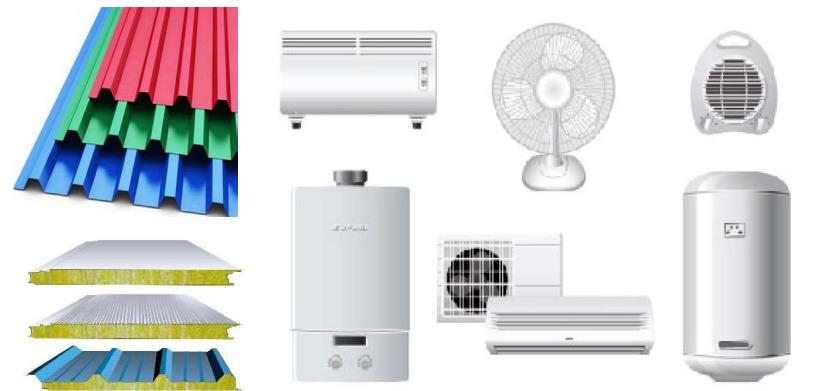
- Q: I have heard using the BRASS casing is the best thing for an AR-15? Should i just use Brass or Steel?
- No. People who say that don't use steel cased ammo. It it said its harder on the extractor. I don't see how. Its dirtier because it doesn't expand like brass does but the steel casing is still softer than the steel of the gun. That is a mild steel which isn't as hard as what most people are thinking of.
- Q: What is the lifespan of steel coils?
- The lifespan of steel coils can vary depending on various factors such as the quality of the steel, the environment it is exposed to, and how well it is maintained. However, on average, steel coils can last anywhere from 10 to 30 years.
- Q: Are steel coils used in HVAC systems?
- Yes, steel coils are commonly used in HVAC (Heating, Ventilation, and Air Conditioning) systems.
- Q: my sister is making rolls and we have no idea what steel cut oats are. can someone please help with this?
- It does NOT look or cook like oatmeal but is made from the same grain. It takes much longer to cook since it is a whole grain, and tastes very good by the way. If you hate the slimy feel of oatmeal, this is the one to try, with all the same nutritional goodness of oatmeal. You can find it in most grocery stores in the hot cereal aisle. EDIT: you are right Mnt. Camp, steel cut is better that the regular oatmeal.
- Q: How are steel coils protected against moisture and humidity?
- Steel coils are protected against moisture and humidity through a variety of methods. One common method is the application of a protective coating on the surface of the steel. This coating acts as a barrier, preventing moisture from coming into direct contact with the steel surface. Coatings can be made of various materials such as paint, zinc, or other corrosion-resistant substances. In addition to coatings, steel coils are often wrapped in a moisture-resistant material such as plastic or waxed paper. This wrapping provides an extra layer of protection, preventing moisture from seeping into the coils during storage or transportation. Furthermore, steel coils are typically stored in a controlled environment with controlled humidity levels. This helps to minimize the chances of moisture condensation on the surface of the coils. Storage facilities may also utilize dehumidifiers or other moisture control measures to maintain optimal conditions. Lastly, proper handling and transportation practices are crucial in ensuring the protection of steel coils against moisture and humidity. Special care is taken to avoid exposing the coils to rain or excessive humidity during loading, unloading, and transportation processes. By employing these various protective measures, steel coils can be effectively safeguarded against moisture and humidity, reducing the risk of corrosion and maintaining their quality and integrity.
- Q: Please give me the name of the steel, and the percentage of materials from what It consists, if you can give me five types of steel it will be better so I can decide. Thanks.
- Stain less steel.
- Q: How are steel coils used in the production of metal cladding?
- Steel coils are used in the production of metal cladding as a primary raw material. Metal cladding refers to the process of covering a building's exterior with a layer of metal, typically steel, to enhance its durability, aesthetics, and insulation properties. Steel coils serve as the starting point for the manufacturing of metal cladding. These coils are typically made of galvanized steel, which is steel coated with a layer of zinc to protect it from corrosion. The coils are unrolled and fed into a roll-forming machine, where they are shaped into the desired profile for the metal cladding panels. Once the steel coils are formed into the required shape, they undergo various processes to enhance their properties. These processes may include cutting, perforating, and embossing to create patterns, textures, or openings in the cladding panels. The coils can also be coated with additional protective layers, such as paint or powder coating, to provide additional corrosion resistance and aesthetic appeal. The shaped and processed steel coils are then assembled into metal cladding panels. These panels are designed to interlock with each other, creating a seamless and visually appealing exterior for buildings. The panels can be attached to the building's structure using various methods, such as screws, clips, or adhesives. The use of steel coils in metal cladding production offers several advantages. Steel is a strong and durable material, making it suitable for exterior applications that require resistance to weathering, impact, and other environmental factors. Additionally, steel is highly versatile, allowing for a wide range of design options and customization. In conclusion, steel coils play a crucial role in the production of metal cladding. They serve as the raw material, which is shaped, processed, and assembled into panels that provide buildings with enhanced protection, aesthetics, and insulation properties.
- Q: What are the factors that affect the price of steel coils?
- The factors that affect the price of steel coils include supply and demand dynamics, fluctuations in raw material costs (such as iron ore and coal), changes in energy prices, market competition, import and export regulations, currency exchange rates, and overall economic conditions.
- Q: How do steel coils contribute to the water and wastewater industry?
- Steel coils contribute to the water and wastewater industry by being used in the construction of pipes, tanks, and other infrastructure. These coils provide strength, durability, and corrosion resistance, ensuring the integrity and longevity of water and wastewater systems. Additionally, steel coils are often utilized in the manufacturing of water treatment equipment and machinery, helping to improve the efficiency and effectiveness of the water and wastewater treatment processes.
- Q: Can one assume that stainless steel that can be hardened is magnetic?
- actually stain less steel is mainlly three first one is austenitic, 2nd one is ferritic, and 3rd is martensitic. These three types of steels are identified by their microstructure or predominant crystal phase. Austenitic. Austenitic steels have austenite as their primary phase (face centered cubic crystal). These are alloys containing chromium and nickel (sometimes manganese and nitrogen), structured around the Type 302 composition of iron, 18% chromium, and 8% nickel. Austenitic steels are not magnetic and not hardenable by heat treatment. The most familiar stainless steel is 304 containing 18-20% chromium and 8-10% nickel. Ferritic. Ferritic steels have ferrite (body centered cubic crystal) as their main phase. These steels contain iron and chromium. Ferritic steel is somewhat magnetic, less ductile than austenitic steel, and is not hardenable by heat treatment. Martensitic. Martensitic steels have orthorhombic martensite as their main phase. Martensitic steels are low carbon steels. They are magnetic, and may be tempered and hardened. Martensite gives steel great hardness, but it also reduces its toughness and makes it brittle. If you ran around the house with a magnet, checking on the items you know are stainless steel, you would probably find that cookware and flatware are not magnetic, but cutlery might be slightly magnetic.
Send your message to us
Color Coated Alu-zinc Steel Coil PPGP PRE-PAINTED Aluzinc
- Loading Port:
- Shanghai
- Payment Terms:
- TT or LC
- Min Order Qty:
- 20 m.t.
- Supply Capability:
- 10000 m.t./month
OKorder Service Pledge
Quality Product, Order Online Tracking, Timely Delivery
OKorder Financial Service
Credit Rating, Credit Services, Credit Purchasing
Similar products
Hot products
Hot Searches
Related keywords
